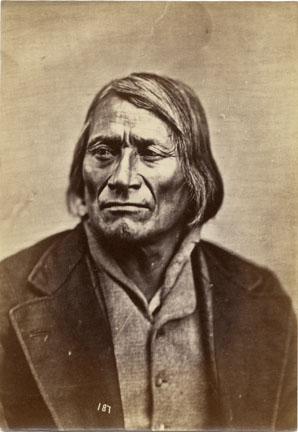Two Kettles facts for kids
The Two Kettles (also called "Two Boilings") are one of the seven main groups, or subtribes, of the Lakota people. The Lakota, along with the Dakota, form a larger group known as the Očhéthi Šakówiŋ, which means "Seven Council Fires." Today, many Two Kettles people live on the Cheyenne River Indian Reservation.
The Two Kettles are often grouped with the Sans Arc (whose name Itázipčho means 'Without Bows') and the Miniconjou (whose name Mnikȟáŋwožu means 'Plants by the Water'). Together, these groups are known as the Central Lakota. Each of these main groups is made up of smaller family groups called bands or tiyošpaye.
What are the Two Kettles Bands?
Historically, the Two Kettles people were divided into several smaller family groups or thiyóšpaye. These groups often lived and hunted together.
Here are some of their historic bands:
- Wanúŋwaktenula (also known as Waniwacteonila) - This name means 'Killed Accidentally'.
- Šúŋka Yúte šni - This name means 'Eat No Dogs'.
- Mnišála - This name means 'Red Water'. This group originally came from the Sans Arc people.
- Oíglapta - This name means 'Take All That Is Left'.
The Two Kettles, or Oóhenuŋpa, were once part of a larger Miniconjou group called Wáŋ Nawéǧa, which means 'Arrow broken with the feet'. Around 1840, they separated and became their own distinct group or oyáte, which means 'tribe'.
A person named James Owen Dorsey, who studied different cultures, said that the Two Kettles were divided into two main parts:
- Oohe noⁿpa (the main Oóhenuŋpa group)
- Ma waqota (Há waȟóta) - This name means 'Skin streaked grayish'.
A Look at Two Kettles History
Before 1843, explorers did not mention the Two Kettles as a separate group. When they first appeared, the group had about 800 people. If each family had about 7 people, this would mean they had around 115 tipis. This also suggests they had about 230 warriors.
The Two Kettles were known to live near the Cheyenne River and the Missouri River. They were skilled hunters and respected white traders and visitors. In their early history, they did not often engage in warfare. However, they later became involved in conflicts. Eventually, they signed a treaty agreeing not to attack others unless it was for self-defense.
Important Two Kettles People
- Eagle Woman (Waŋblí Ayútepiwiŋ) (1820–1888) - She was an important leader and diplomat. She worked for peace and was also a trader. She was part of both the Two Kettles and Hunkpapa Lakota groups.


